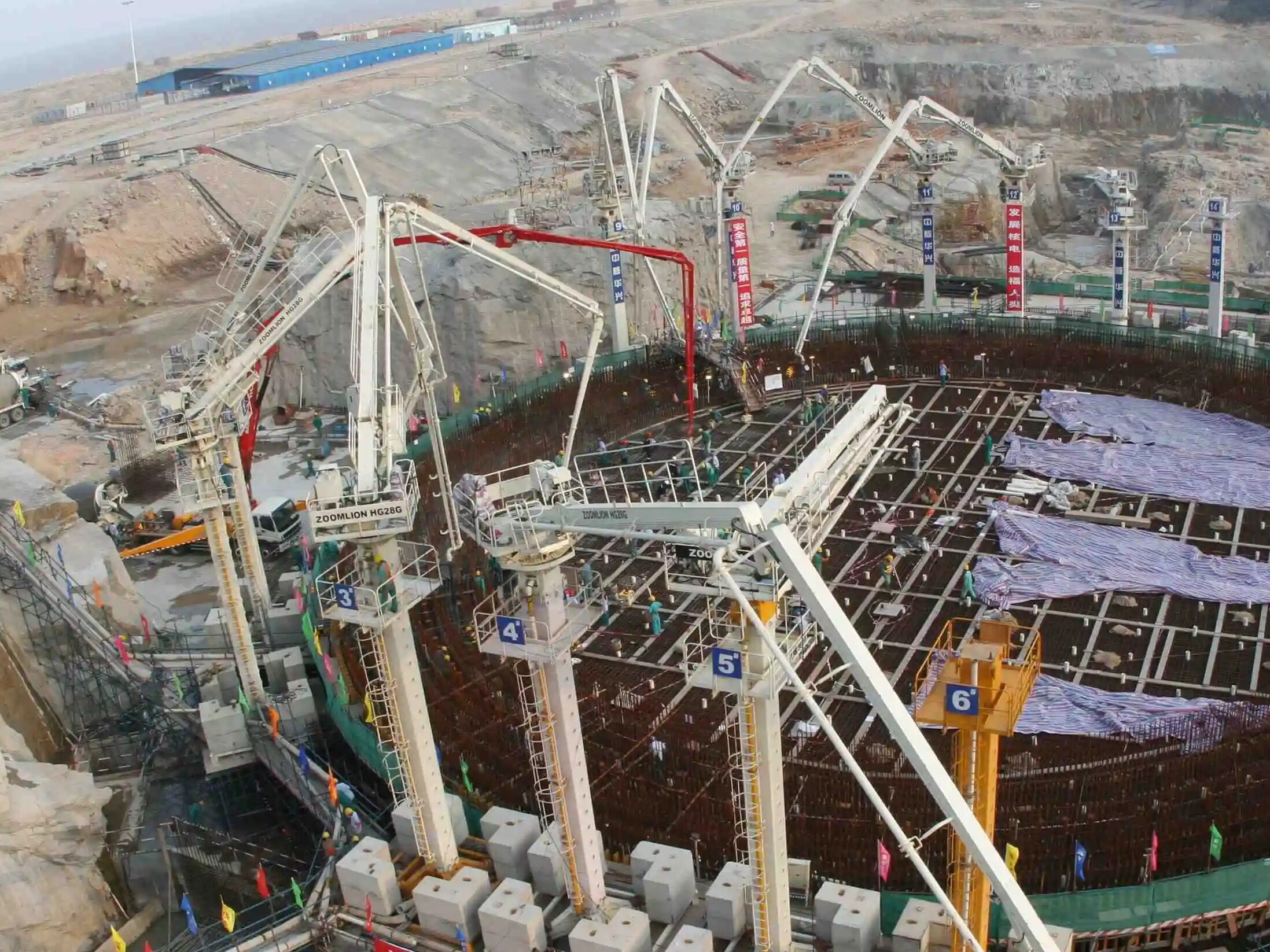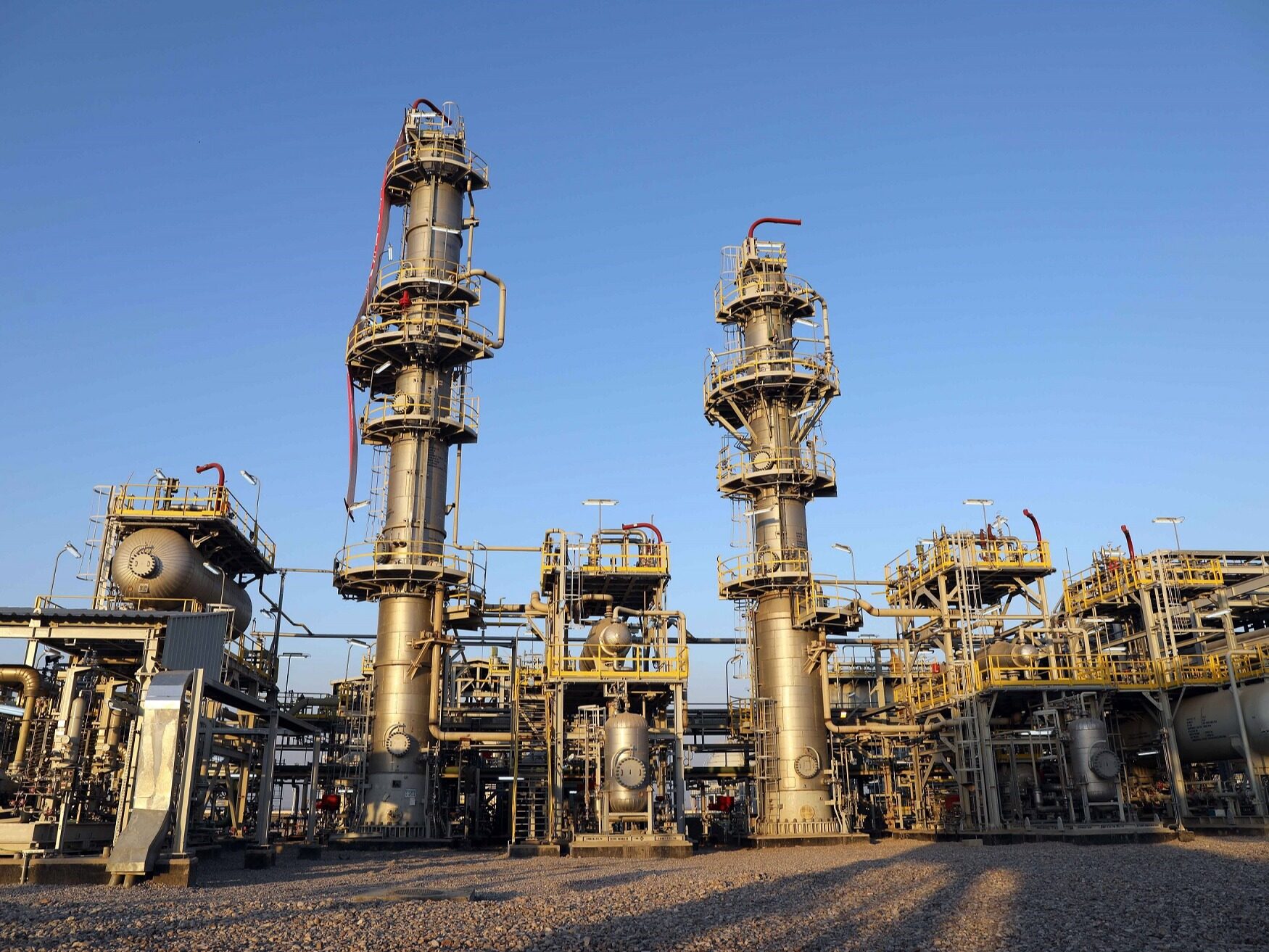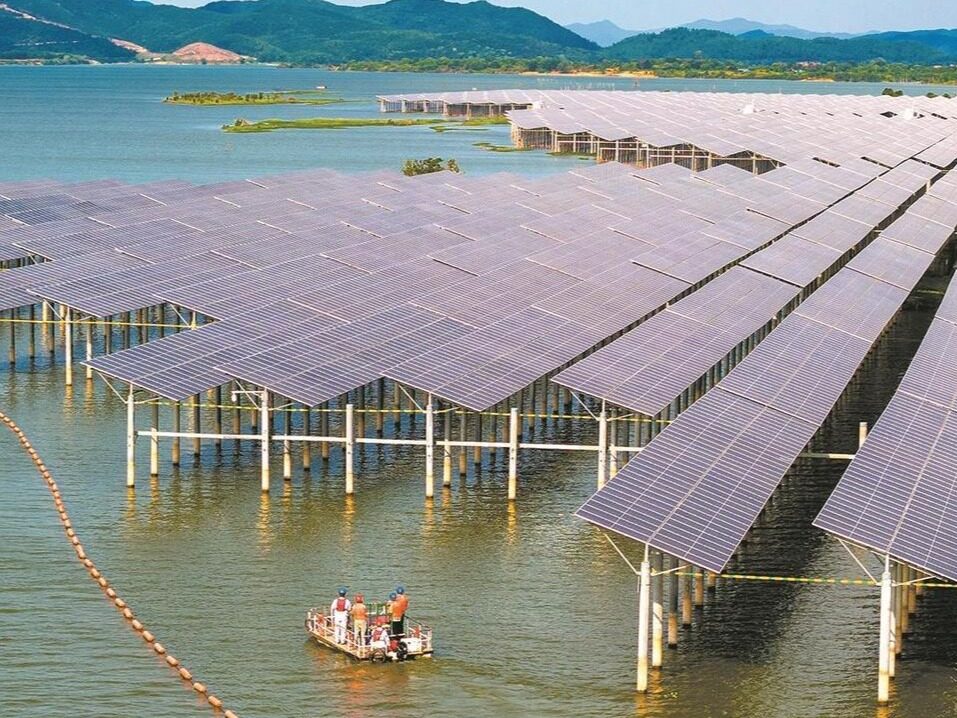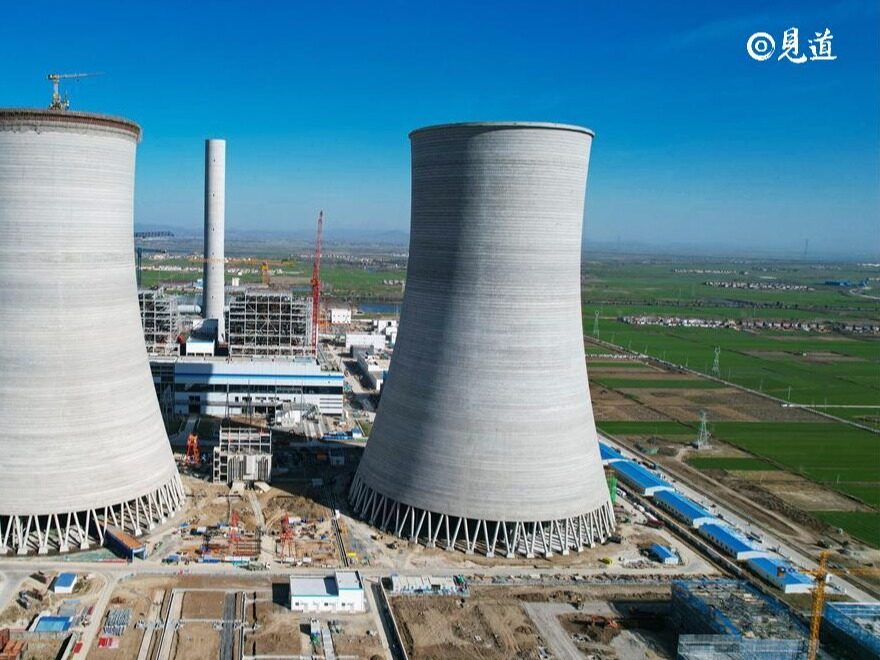- Developing countries replace developed countries as global leaders in clean energy

Energy is the foundation and driving force of social and economic progress. At present, the development of renewable energy has entered a fast lane. The goal of carbon peaking and carbon neutrality has put forward new requirements for energy transformation and development. The importance of energy security in the overall economic and social development has become increasingly prominent. , "14th Five-Year" energy development faces many new challenges. The "14th Five-Year Plan for Modern Energy System" (hereinafter referred to as the "Plan") is based on the new development stage, grasps the new development situation, and makes specific arrangements for energy development for a period of time in the future. Combined with the study and understanding of the "Planning", the author believes that the energy development situation and tasks of the "14th Five-Year Plan" can be summarized as "eight challenges and countermeasures".
1. Challenges and countermeasures brought by carbon neutrality to energy innovation and development
At present, more than 130 countries and regions have put forward the goal of net zero emissions or carbon neutrality of greenhouse gases, accounting for about 88% of the total global carbon emissions. However, there is currently no feasible systematic solution for how to achieve this. China has achieved certain leading advantages in clean energy technologies such as nuclear power, wind power, photovoltaic power generation and hydropower. In recent years, the green and low-carbon transformation of energy has been effectively promoted, but it is far from enough to support the carbon neutrality goal in the future. To achieve carbon neutrality, disruptive breakthroughs must be made in the green and low-carbon field. These disruptive technologies can't come, can't be bought, can't talk about, and can only rely on independent innovation. These technological breakthroughs cannot be left for tomorrow. Conversely, a one-step difference can lead to permanent lag. The need for technological innovation has never been more urgent than it is today, which poses a huge challenge to energy innovation and development during the "Tenth Five-Year Plan" period.
The ninth meeting of the Central Finance and Economics Committee emphasized that "we must promote major breakthroughs in green and low-carbon technologies, promptly deploy research on low-carbon cutting-edge technologies, and accelerate the promotion and application of pollution-reduction and carbon-reduction technologies." As the first driving force for development, aiming at the "dual carbon" goal, a series of scientific and technological innovation tasks have been deployed. The first is to strengthen frontier scientific and technological research such as energy storage, hydrogen energy, carbon capture and storage, and natural gas hydrate, and strive to gain a competitive advantage in the new round of energy reform. The second is to continue to increase research and development efforts in wind power, solar power, advanced nuclear energy, etc., to consolidate China's long-term advantages in the development and utilization of non-fossil energy. The third is to further improve the technical level of green mining and clean and efficient utilization of coal and oil and gas. The fourth is to improve the energy technology and industrial innovation system, and implement scientific and technological innovation demonstration projects.
2. Challenges and countermeasures brought by the growth of fossil energy consumption to carbon peaking
Carbon emissions in the energy sector are directly related to fossil energy consumption. At present, China's fossil energy consumption is still showing a continuous growth trend. During the "13th Five-Year Plan" period, the consumption of fossil energy increased by about 370 million tons of standard coal, of which the consumption of coal, oil and natural gas increased by 40 million tons, 100 million tons and 135 billion cubic meters respectively. In 2021, the consumption of coal, natural gas and crude oil will increase by 4.6%, 12.5% and 4.1% year-on-year respectively, and the growth trend of fossil energy consumption will continue. According to the demand forecast, the national oil and gas consumption will maintain rapid growth during the "14th Five-Year Plan" period, and it will be difficult to curb the growth momentum of coal consumption. The "14th Five-Year Plan" is a critical period and a window period for carbon peaking. How to effectively control fossil energy consumption on the premise of ensuring energy security and lay a solid foundation for the realization of carbon peaking before 2030 is the "14th Five-Year Plan". one of the major challenges.
The "Opinions of the Central Committee of the Communist Party of China and the State Council on Completely, Accurately and Comprehensively Implementing the New Development Concept and Doing a Good Job in Carbon Neutralization of Peak Carbon Dioxide Emissions" clearly states that the consumption of fossil energy should be strictly controlled, and actions to replace renewable energy should be implemented to ensure safe carbon reduction. The plan implements the requirements of the central document. On the one hand, vigorously develop various non-fossil energy sources such as wind power, solar energy, hydropower, nuclear power, biomass energy, geothermal energy, and ocean energy. , to accelerate the replacement of fossil energy. On the other hand, resolutely curb the blind development of low-level projects with high energy consumption and high emissions, strictly control the growth of coal consumption, optimize the use of natural gas, and promote the transformation and upgrading of the refining and chemical industry. Through the "trade-off" between fossil energy and non-fossil energy, structural adjustment can be achieved to achieve carbon emission control goals.
3. Challenges and countermeasures of rising dependence on oil and gas on energy security
China's oil and gas resources are relatively scarce, with oil and natural gas reserves accounting for only 1.5% and 4.5% of the world's total, while consumption accounts for 16.7% and 8.6% of the world's total. At present, China's dependence on foreign oil and natural gas has reached 70% and 40%. With the increase in oil and gas consumption during the "14th Five-Year Plan" period, the degree of external dependence will continue to rise. In terms of crude oil import channels, about 70% of crude oil imports need to pass through the Strait of Malacca, and the security risk of the transportation chain is relatively high. Compared with crude oil, although natural gas is relatively less dependent on external sources, it has higher requirements on the stability of upstream supply. Once the supply is tight, it will have a greater impact on people's livelihood needs such as heating in winter. Therefore, at present and for some time to come, oil and gas will be the main shortcoming of China's energy security.
According to the requirements of the "14th Five-Year Plan" outline, "Based on the domestic market, complement the shortcomings, provide multiple guarantees, and strengthen reserves", the plan focuses on improving oil and gas security capabilities from the following aspects. First, increase domestic oil and gas exploration and development, and promote oil and gas storage and production. The second is to improve the reserve system, enhance natural gas reserves and control capabilities, and strengthen security strategies and technical reserves. The third is to promote the substitution of oil consumption, and accelerate the development of new energy vehicles, biofuels, and port shore power. The fourth is to enhance import diversification and security capabilities and diversify security risks.
4. Challenges and countermeasures to energy supply guarantee due to seasonal fluctuations in demand
During the "Thirteenth Five-Year Plan" period, China's energy supply and demand were generally loose, but the regional and seasonal supply of electricity, coal and natural gas were all tight. The capacity is difficult to meet the peak load needs. Recently, extreme weather has occurred frequently around the world. In December 2020, a cold wave hit the central and eastern regions of China. The power load in Hunan, Jiangxi and other places broke records, and measures for orderly electricity consumption were adopted. In February and July 2021, Texas, California and other regions of the United States experienced severe cold and extreme high temperature successively, some energy facilities were interrupted, and the supply of electricity and natural gas was in crisis. How to ensure the security of energy supply under seasonal peak loads and extreme weather is a common problem facing the world.
The "Plan" takes into account both system security and economy. On the basis of rationally arranging the scale of production capacity construction, first, it is necessary to comprehensively strengthen the construction of energy reserves. In addition to oil and gas reserves, it is necessary to establish and improve a coal reserve system, and to develop safe and efficient energy storage in a diversified manner. The second is to tap the potential of demand-side adjustment, increase the flexibility of energy demand, and focus on improving the power demand-side response capability; the third is to strengthen bottom-line thinking, formulate emergency plans for possible extreme situations, and improve emergency safety management and accident recovery capabilities.
5. Challenges and countermeasures brought by the rapid development of new energy to the power system
With the goal of carbon peaking and carbon neutrality, the development of new energy will be further accelerated. The "Planning" proposes to accelerate the development of wind power and solar power generation. The study predicts that by 2060, under the carbon neutral scenario, wind power and solar power will account for more than half of the power generation, and will become the main body of electricity supply. Wind power and solar power have the characteristics of randomness and volatility, the output is basically uncontrollable, the moment of inertia is low, the power electronic equipment is widely used, the difficulty of real-time balance of power supply and demand and safe and stable operation has greatly increased. huge challenge.
The ninth meeting of the Central Finance and Economics Committee proposed to build a new power system, which is an inevitable way to ensure the rapid and high-quality development of new energy, and it is also a long-term systematic project. The "Plan" proposes a phased arrangement for the construction goals of the new power system. Substantial results should be achieved by 2035. During the "14th Five-Year Plan" period, the proportion of new energy should be gradually increased, and the four sources, grid, load and storage should be implemented. In this regard, specific measures for the construction of a new type of power system were proposed. On the power supply side, promote the flexible transformation of coal power and the construction of peak-shaving power sources such as peak-shaving gas power, pumped-storage power stations, and heat-storage solar thermal power generation to improve the flexibility of power supply. On the power grid side, actively develop smart distribution networks, active distribution networks, smart micro-grids, flexible DC power grids, etc., and innovate the structural form and operation mode of the power grid. On the load side, vigorously improve the flexibility of power load and promote the two-way interaction between supply and demand. On the energy storage side, actively develop new energy storage with various technical routes and various application scenarios to provide support for the development of new energy.
6. Challenges and countermeasures brought by the increasingly large and complex system to the optimized operation
The scale of China's energy system is huge and it is still expanding. The total energy production and consumption, power generation installed capacity and electricity consumption all rank first in the world. China has built the world's largest national interconnected power grid. At the same time, with the development of wind power and solar power generation, energy storage, hydrogen energy, electric vehicles, etc., the operating characteristics of energy systems are more complex, and the two-way flow of energy between energy storage and electric vehicles is obvious. Distributed energy makes the supply side and the consumption side. The boundaries are gradually blurred, the difficulty and challenge of the safe and efficient operation of the system are increasing, and the traditional management and operation mode can no longer meet the needs of the transformation and upgrading of the energy system.
In recent years, technologies such as the Internet, big data, cloud computing, artificial intelligence, and blockchain have accelerated innovation and are increasingly integrated into the entire process of economic and social development. General Secretary Xi Jinping pointed out that the digital economy is the fulcrum for the transformation and upgrading of traditional industries. It is necessary to promote the deep integration of digital technology and the real economy, and enable the transformation and upgrading of traditional industries. The "Planning" regards accelerating the digital and intelligent upgrading of the energy industry as an important means to promote system optimization. First, it is to promote the digitization of energy infrastructure, improve the flexible perception and efficient production and operation capabilities of the energy system, and realize intelligent regulation and management; the second is to build a smart energy platform and The data center will give full play to the service support role of energy big data in industry management and social governance; the third is to implement a number of smart energy demonstration projects to explore a replicable and popularized development model.
7. The challenges and countermeasures brought by the people's better life to shared development
Improving people's livelihood and well-being is the fundamental purpose of development, and energy development is no exception. The purpose of energy security supply is to meet people's production and living needs, and the green and low-carbon transition is to improve people's living environment. In recent years, China's energy and people's livelihood services have been continuously improved. The problem of electricity consumption for people without electricity has been solved throughout the year, and the rural power grid transformation and upgrading and photovoltaic poverty alleviation projects have been implemented. The emission of energy pollutants has continued to decline, and air quality has been significantly improved. At the same time, people's requirements for energy development for a better life are also constantly improving, such as the requirements for the convenience of electric vehicle charging facilities, the requirements for clean economic heating in winter in northern rural areas, and the requirements for warm winter in some areas south of the Huai River. The sense of gain in energy development needs to be enhanced, and the benefits brought by energy development to ordinary people are not enough.
The "Plan" adheres to the principle of giving priority to people's livelihood and sharing development. First, efforts should be made to improve the universal service level of energy, enhance the supply capacity of clean energy in rural areas, promote the balanced development of urban and rural energy supply infrastructure, optimize the layout of charging infrastructure, and meet the development needs of electric vehicles. The second is to improve the level of clean energy consumption in people's lives, improve the reliability of power supply, strengthen the protection of residents' gas consumption, continue to promote clean heating in winter in northern regions, and promote clean energy substitution in rural areas. The third is to improve the level of energy development and sharing, actively promote the construction of distributed photovoltaics and decentralized wind power such as rooftop photovoltaics, complementary agricultural photovoltaics, and complementary fishing photovoltaics, develop and utilize biomass energy and geothermal energy according to local conditions, and promote the formation of new energy industries that enrich the people.
8. Challenges and countermeasures brought by energy green and low-carbon transition to institutional mechanisms
In recent years, China has continuously promoted the reform of energy system and mechanism, focusing on power and oil and gas fields, and achieved certain results, but it still cannot fully meet the needs of energy transformation and reform. In the field of electric power, the coordinated and mutually beneficial development mechanism of new energy and traditional power sources is not perfect, the enthusiasm of users to consume new energy has not been effectively stimulated, the market entity status and price mechanism of new energy energy storage are not yet clear, comprehensive energy services, incremental power distribution New models and new formats such as business and multi-energy complementarity are not progressing well due to the imperfect supporting management mechanism. In order to achieve the "dual carbon" goal, the pace of energy transformation will be further accelerated in the future. How to break the barriers of institutional mechanisms and escort the green and low-carbon development of energy is an urgent problem that needs to be solved during the "14th Five-Year Plan".
The plan insists on deepening reforms, giving full play to the decisive role of the market in resource allocation, giving better play to the role of the government, and clarifies the direction for improving the energy system and mechanism. In terms of promoting green and low-carbon transformation of energy: First, improve the market system, innovate power dispatching and trading mechanisms that are conducive to non-fossil energy consumption, guide and support energy storage facilities and demand-side resources to participate in power market transactions, and expand new power through marketization. Energy consumption space. The second is to deepen the reform of the price mechanism, improve the price formation mechanism for wind power, photovoltaic power generation, and pumped storage energy, and establish a new energy storage price mechanism. The third is to support the development of new models and new formats, and remove institutional and institutional barriers to market access, investment operations, and participation in market transactions. Editor / Xu Shengpeng
Comment
 Praise
Praise
 Collect
Collect
 Comment
Comment
 Search
Search














Write something~